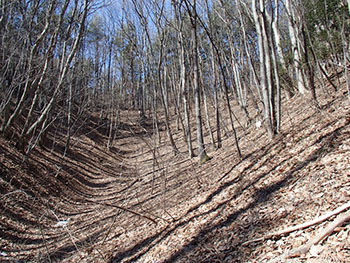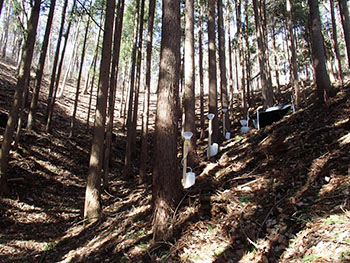Home > Research > Research Results > Research Results 2018 > Radioactive cesium retained in forest soils is associated with organic particles
Update:March 20, 2018
Main content starts here.
Radioactive cesium retained in forest soils is associated with organic particles
| Article title |
Distribution of radiocesium in different density fractions of temperate forest soils in Fukushima |
|---|---|
| Author (affiliation) |
Jumpei Toriyama (a), Masahiro Kobayashi (b), Toshihide Hiruta (c), Koji Shichi (d) |
| Publication Journal |
Forest Ecology and Management, 409:260–266, February 2018, DOI: 10.1016/j.foreco.2017.11.024( External link ) |
| Content introduction |
Determining an appropriate timeline for resuming the use of forests contaminated with long-lived radioactive cesium from the Fukushima Daiichi nuclear power plant accident is an important issue in the surrounding community. To plan for the future use of forests, information on the distribution and stability of radioactive cesium in the forest ecosystem is required. So far, observation results indicate that over time, radioactive cesium dispersed in the air above the forests has accumulated in the surface soil layer. However, the mechanism underlying this process is not well understood. Forest soil includes a variety of materials including organic matter and mineral particles, but to date, there are no detailed reports on the type of soil material that radioactive cesium is most often associated with. Therefore, in the present study, we focused on differences in the specific gravity of soil particles and measured the concentration of radioactive cesium associated with each type of particle. The forest soil samples were separated into light- or heavyweight particles; these are mainly derived from plant debris or mineral particles, respectively. Results from topsoil samples collected in Fukushima Prefecture forests from 2012–2014 revealed that the concentration of radioactive cesium associated with lightweight, organic particles (specific gravity less than 1.6) was eight times higher than that associated with heavy mineral particles. Furthermore, lightweight particles constituted only approximately 10% of the total soil weight but accounted for more than 40% of the total radioactive cesium level in the samples. This suggests that in forest topsoil, the fine particles of light organic matter derived from fallen leaves play a significant role in retaining radioactive cesium in the topsoil. Our study shows that organic matter contained in the soil functions to maintain radioactive cesium in the forest and indicates that the conservation of the topsoil is important for the future use of forests in Fukushima. Additionally, our observations of disproportionate radioactive cesium accumulation in lightweight soil particles are relevant to the study of radioactive material transport processes in the river basins.
Photo: Study sites in Fukushima Prefecture forests. The topsoil in these forests contains substantial amounts of radioactive cesium.
|
Copyright © Forest Research and Management Organization. All rights reserved.


